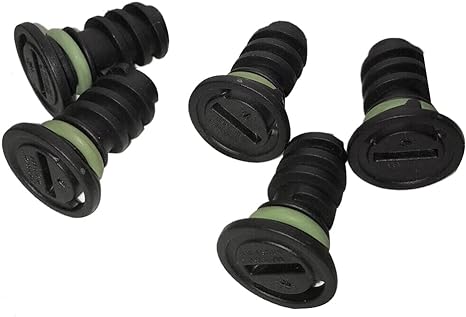Power Steering Rack and Pinion Seal Replacement Kit for Smooth Steering Performance
Understanding Power Steering Rack and Pinion Seal Kits
Power steering systems have become an indispensable component of modern vehicles, significantly enhancing driver comfort and control. Central to this system is the steering rack and pinion, which translates the rotational motion of the steering wheel into linear motion that directs the vehicle's wheels. Over time, wear and tear can lead to leaks in the seals surrounding this mechanism, necessitating the use of power steering rack and pinion seal kits.
What Are Power Steering Rack and Pinion Seal Kits?
A power steering rack and pinion seal kit comprises various rubber and metal components designed to replace worn or damaged seals in your vehicle's power steering system. These kits typically include primary seals, backup rings, O-rings, and sometimes bushings, specifically crafted to withstand the pressures and demands of hydraulic steering. The primary function of these seals is to prevent steering fluid from leaking, ensuring efficient steering performance and system longevity.
Importance of Seals in Power Steering Systems
Seals in power steering systems play a critical role. They help maintain the hydraulic pressure required for the power assist feature to function effectively. Without intact seals, fluid can escape, leading to decreased power assist, erratic steering, and potential damage to other components within the power steering system. In addition, leaking fluid can create a mess and pose safety hazards by causing slippery surfaces under the vehicle and at the workplace.
Signs of a Failing Seal
power steering rack and pinion seal kit

Knowing the signs of a failing seal can help prevent more significant and costlier repairs. Common indicators include - Fluid Leaks Puddles of bright red or amber power steering fluid under the vehicle are a strong sign of a leak. - Difficult Steering A noticeable increase in steering effort, especially while turning, can indicate that the power assist is compromised due to low fluid levels from leaks. - Unusual Noises Complaints such as groaning or whining sounds when steering could suggest that the fluid is low and the seals are not adequately containing the hydraulic fluid. - Inconsistent Steering Response If the steering feels vague or unresponsive at times, it might be due to a lack of pressurized fluid from a failing seal.
Installing a Seal Kit
Installing a power steering rack and pinion seal kit is a task typically best left to professional mechanics, although experienced DIY enthusiasts may tackle it. The process involves safely elevating the vehicle, draining the power steering fluid, and removing the steering rack assembly. Once disassembled, technicians replace the old seals with new ones from the kit, ensuring everything is lubricated and fitted snugly before reassembling the unit and reinstalling it in the vehicle. It’s crucial to follow the manufacturer’s guidelines closely, as improper installation can lead to further issues.
Maintenance and Replacement
Regular maintenance of your power steering system can extend the life of your seals and overall steering mechanism. This includes periodic checks for leaks, keeping the fluid at the appropriate level, and using high-quality power steering fluid recommended by the vehicle manufacturer. When leaks are detected, addressing them promptly with a seal kit can save money and headaches in the long run.
Conclusion
Power steering rack and pinion seal kits are essential components in maintaining an efficient and safe power steering system. By understanding the significance of these seals and recognizing the signs of wear, vehicle owners can ensure a smoother driving experience. Regular maintenance and timely repairs can significantly prolong the life of your vehicle’s steering system, keeping you safe on the road.
-
The Ultimate Guide to Car Repair Kits: Tools and Essentials Every Driver Should Own
News Aug.01,2025
-
The Complete Guide to Oil Pan Gaskets: Sealing Engine Leaks the Right Way
News Aug.01,2025
-
Preventing Oil Leaks: A Complete Guide to Oil Pan Gaskets and Drain Seals
News Aug.01,2025
-
Everything You Need to Know About Oil Pan Gaskets and Drain Plug Seals
News Aug.01,2025
-
Essential for Car Owners: How to Use a Car Repair Kit to Deal with Minor Breakdown
News Aug.01,2025
-
Comprehensive Guide to Engine Oil Sump Gaskets and Related Seals
News Aug.01,2025
-
The Ultimate Guide to Boat Propeller Bearings and Trailer Wheel Bearings
News Jul.31,2025
Products categories















